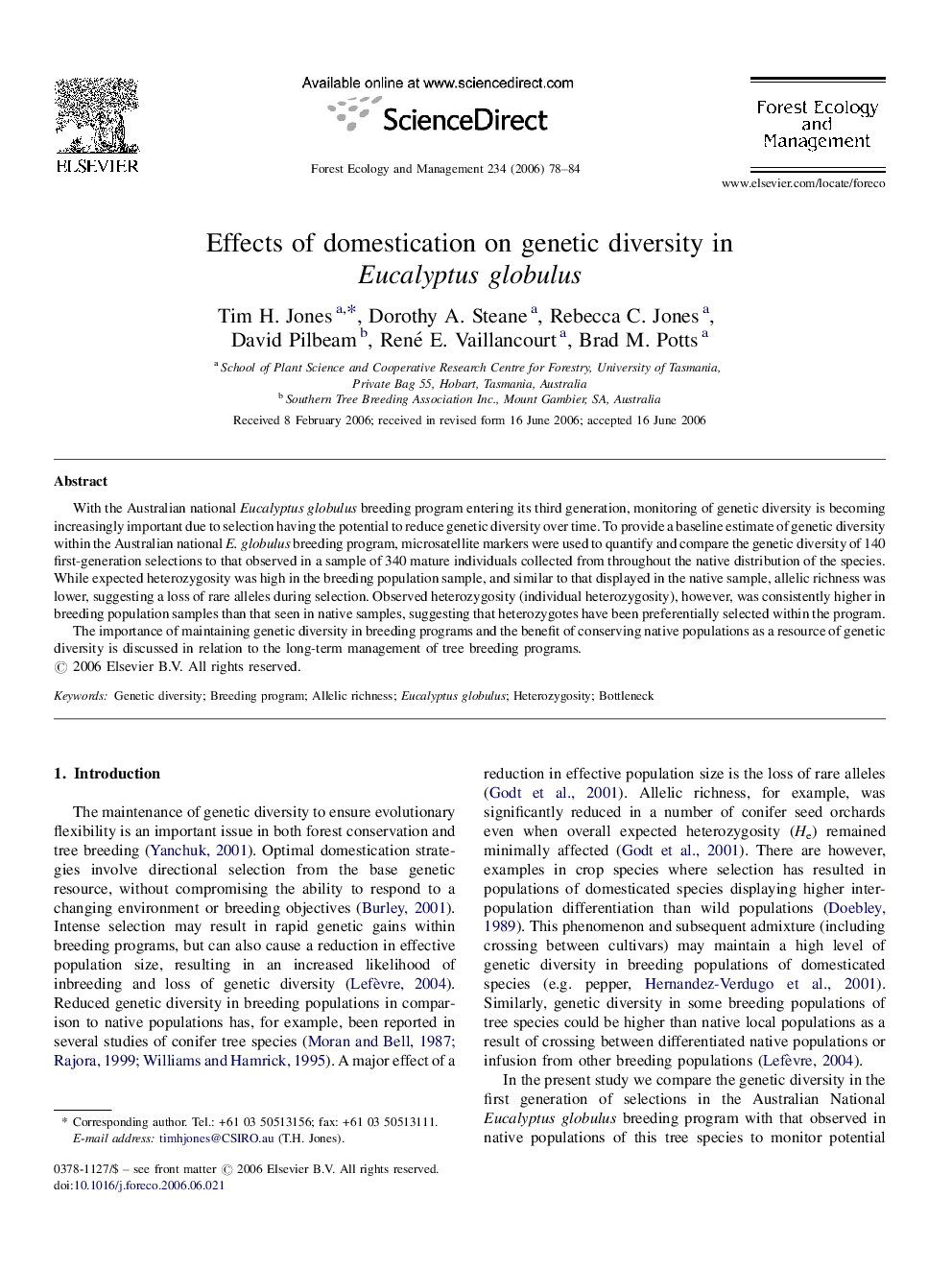| Article ID | Journal | Published Year | Pages | File Type |
|---|---|---|---|---|
| 90194 | Forest Ecology and Management | 2006 | 7 Pages |
With the Australian national Eucalyptus globulus breeding program entering its third generation, monitoring of genetic diversity is becoming increasingly important due to selection having the potential to reduce genetic diversity over time. To provide a baseline estimate of genetic diversity within the Australian national E. globulus breeding program, microsatellite markers were used to quantify and compare the genetic diversity of 140 first-generation selections to that observed in a sample of 340 mature individuals collected from throughout the native distribution of the species. While expected heterozygosity was high in the breeding population sample, and similar to that displayed in the native sample, allelic richness was lower, suggesting a loss of rare alleles during selection. Observed heterozygosity (individual heterozygosity), however, was consistently higher in breeding population samples than that seen in native samples, suggesting that heterozygotes have been preferentially selected within the program.The importance of maintaining genetic diversity in breeding programs and the benefit of conserving native populations as a resource of genetic diversity is discussed in relation to the long-term management of tree breeding programs.
